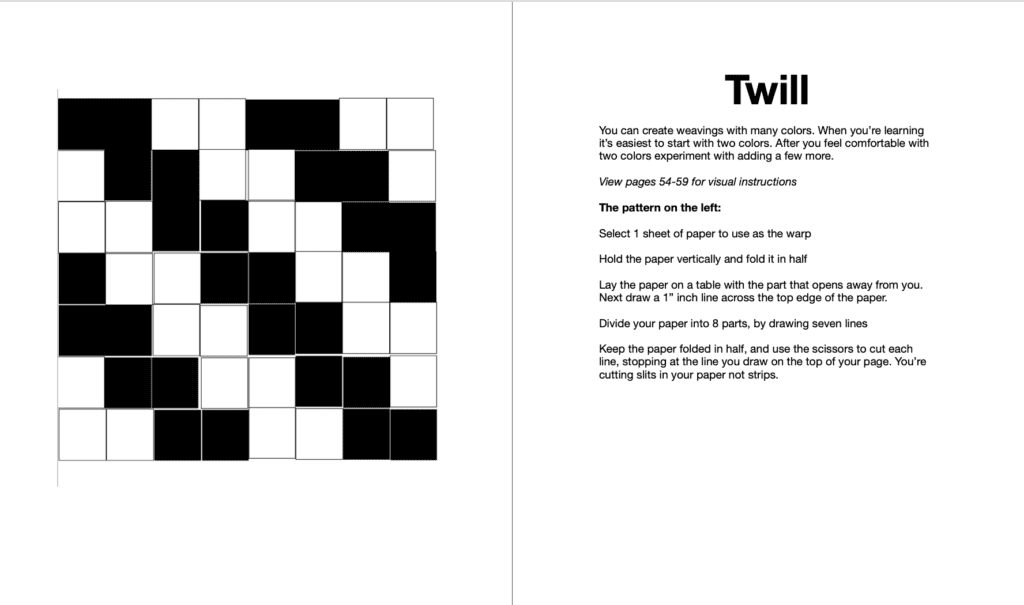How to Scaffold Your Learning
I never learned how to do paper weaving, at least not that I remember. You might not think that’s a big deal, and in some ways, it’s not, but since I spent ten years designing and selling woven textiles, it made my learning curve steeper than it needed to be.

In my college weaving class, we learned to read patterns, which I needed clarification on. Years later, when I started exploring paper weaving, creating and reading patterns made sense. In educational terms, this is called scaffolding; what are the most basic skills you need to learn to understand something new, and how do you continue to build on those skills?
Overall, the concept of scaffolding is something that, no matter your age, we all benefit from in all areas of our life, but we rarely put it in place for ourselves.
Refrain from mistaking scaffolding for creating a detailed to-do list of all the steps to finish a project. Create scaffolding by reflecting on your weaknesses in understanding or skills related to a desired outcome or project and determine what you need to learn to develop your knowledge or skill set.
For the weaving example above, if I was creating a to-do list about making a pattern and turning it into weaving, it might look something like this:
- Learn how to draft a pattern
- Draft pattern
- Dress loom
- Create a mini sample of a pattern
- Make any needed adjustments to the pattern design
- Create weavings
If I’m focusing on providing scaffolding, I’m looking at this list above, focusing on number 1, and thinking about the simplest form of drafting and testing a pattern. It’s paper weaving.
What is the simplest form of what you need to understand?
So I might start by looking at the most basic weaving pattern, tabby weave, and see if I can translate that into paper weaving. If I succeed at that, I can move onto a more complex pattern and see if I continue to find success. Next, I’ll draft my pattern and then work to create it with paper. How does the pattern change based on the color and size of the paper strips? I could move on and now make a mini weaving using yarn to see if my pattern continues to work when introducing new material.
You might not have a desire or need to learn how to paper weave, but if it sounds interesting, check out these two artists , Miguel Arzabe and Lene Juhler . Also make sure to take a look at The Weaving Book
Okay, back to my point, which is not to teach you how to weave but to help you understand how to take meaningful action toward your goals. You don’t take action towards your goals, or you quickly give up because you made the dream too big, or you made it something you need to learn how to do, and you didn’t put any scaffolding in place.
You expected yourself to be at the highest level without taking steps to get there.
What’s your goal?
Now, what is the simplest form of that goal?
What skills do you need to progress on the simplest form of your goal?
Do you dream of opening a restaurant? What’s the smallest form of a restaurant? It might mean you first have people over to your house and make food for them. Then you have a larger group of people over. Next, you explore charging people to make food for them. You need to break down many more steps to start a restaurant, but hopefully, the example above helps you get the point.